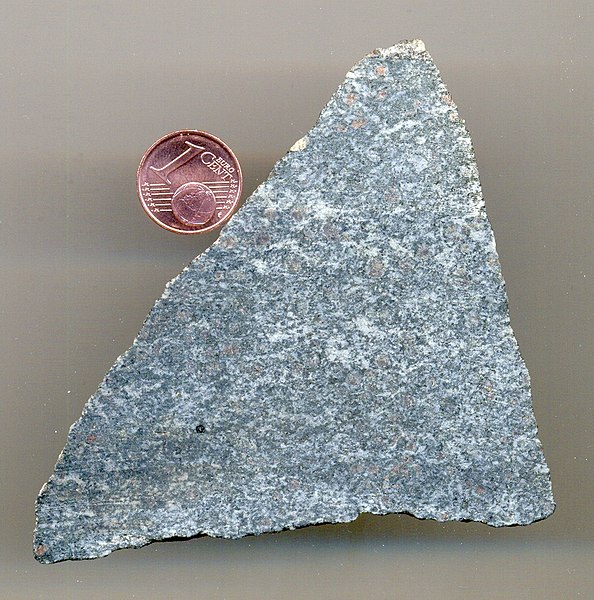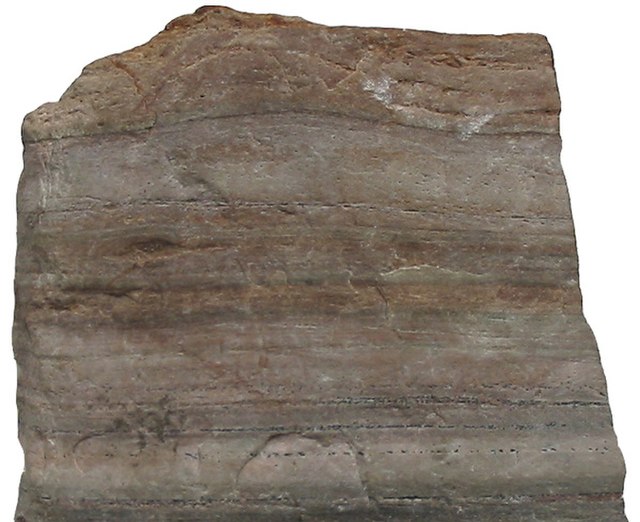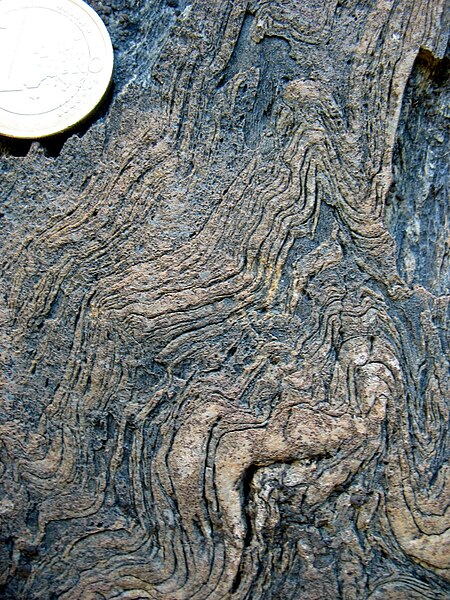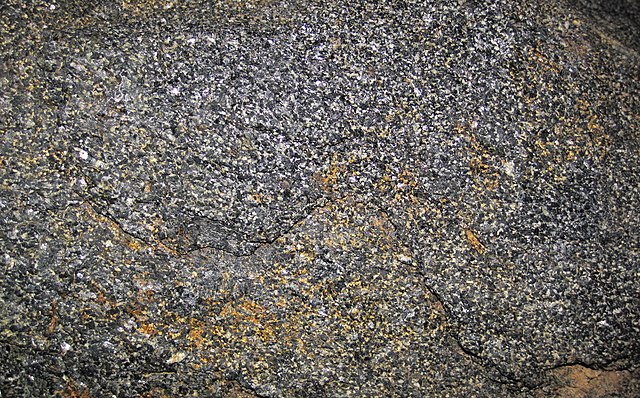Amphibolite is a metamorphic rock that contains amphibole, especially hornblende and actinolite, as well as plagioclase feldspar, but with little or no quartz. It is typically dark-colored and dense, with a weakly foliated or schistose (flaky) structure. The small flakes of black and white in the rock often give it a salt-and-pepper appearance.
An amphibolite boulder in the Botanical Gardens of Charles University, Prague, Czech Republic.
Amphibolite from Cape Cod, Massachusetts
Garnet bearing amphibolite from Val di Fleres, Italy
Garnet amphibolite, sold as "Nordic Sunset Granite", reportedly from Murmansk area
Metamorphic rocks arise from the transformation of existing rock to new types of rock in a process called metamorphism. The original rock (protolith) is subjected to temperatures greater than 150 to 200 °C and, often, elevated pressure of 100 megapascals (1,000 bar) or more, causing profound physical or chemical changes. During this process, the rock remains mostly in the solid state, but gradually recrystallizes to a new texture or mineral composition. The protolith may be an igneous, sedimentary, or existing metamorphic rock.
Quartzite, a type of metamorphic rock
Metamorphic rock, deformed during the Variscan orogeny, at Vall de Cardós, Lérida, Spain
Amphibolite formed by metamorphism of basalt
Metamorphic rock containing staurolite and almandine garnet








